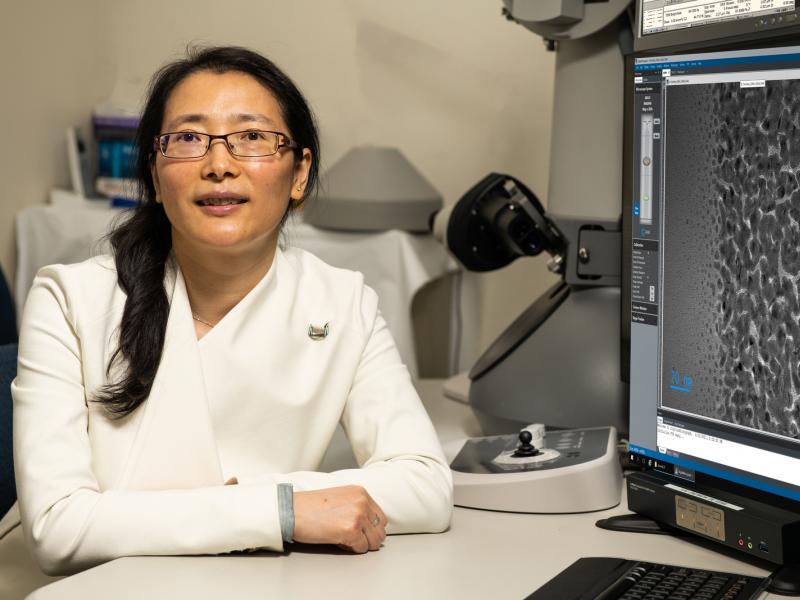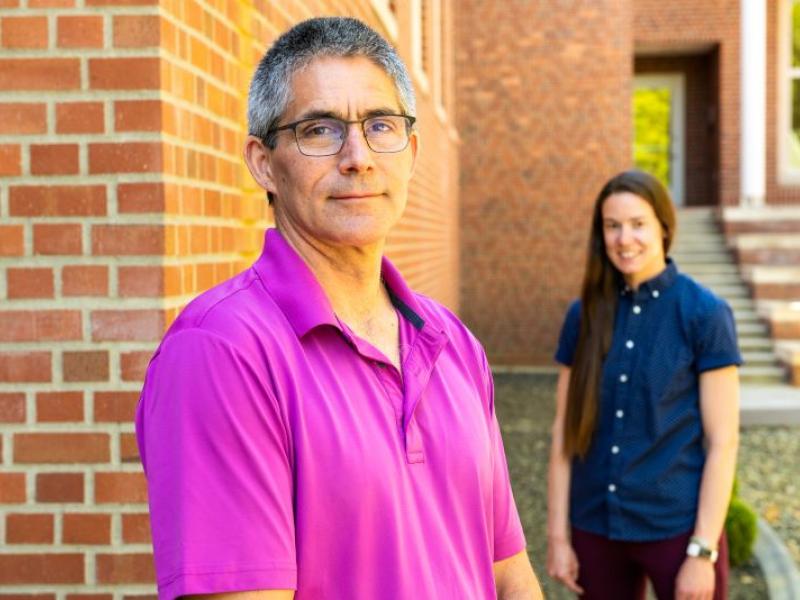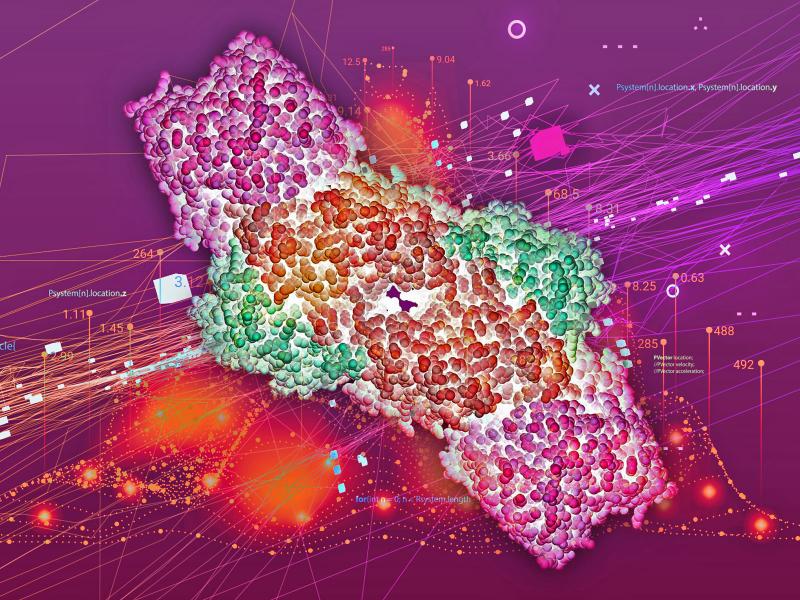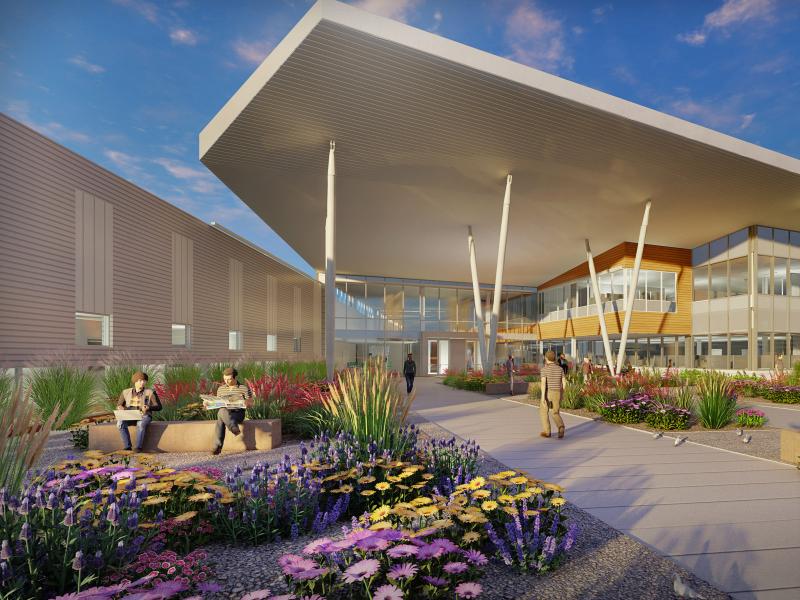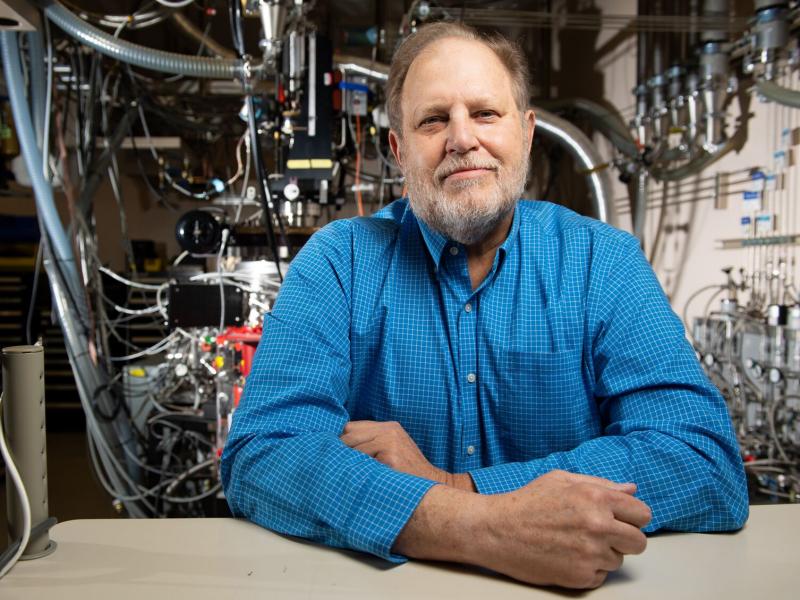
Energy Sciences Center
Coming in 2021
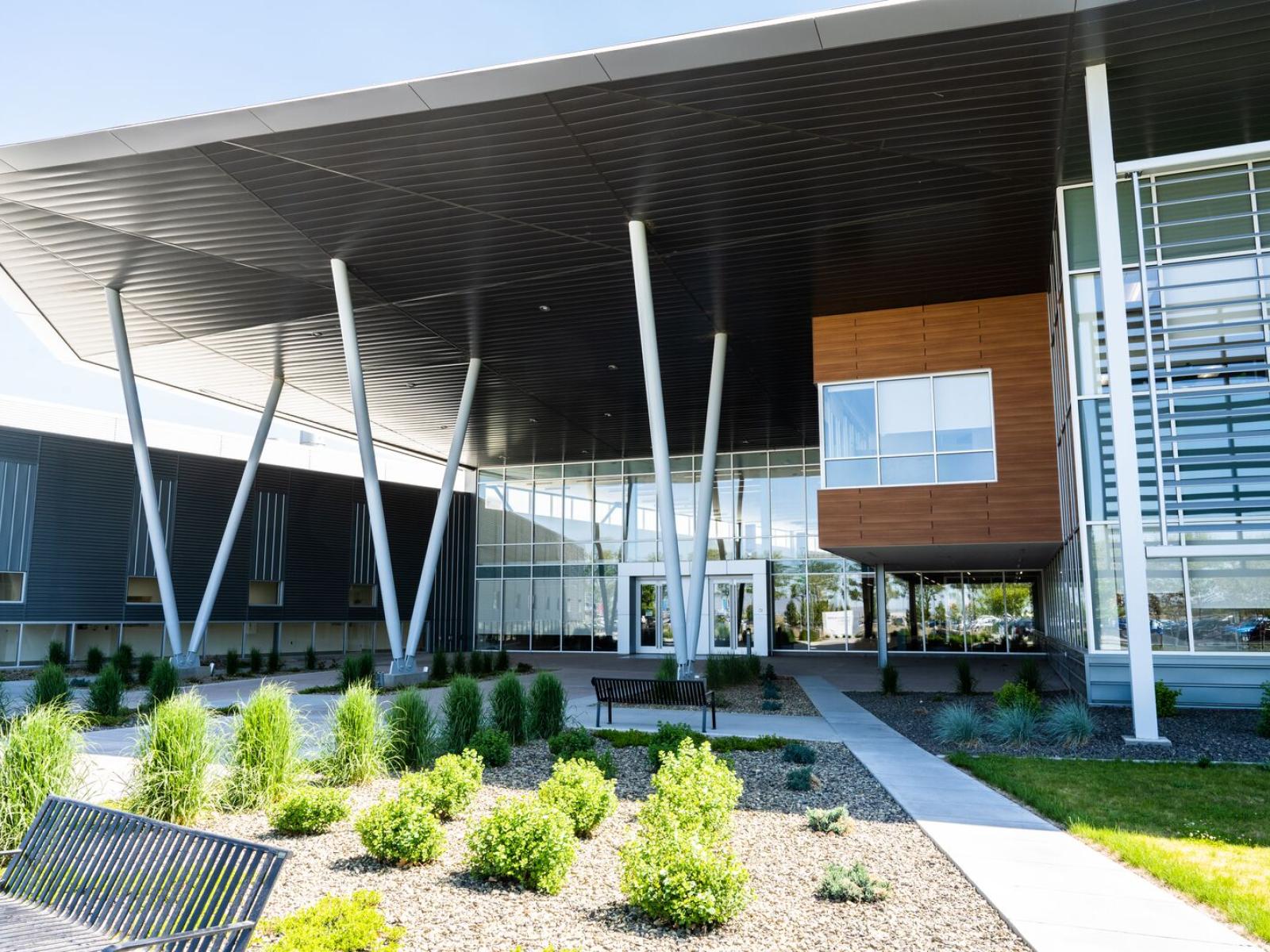
Artist's rendering, subject to change during the design process
Connection. Collaboration. Discovery. These cornerstones of innovation will be central to a new facility opening in fall of 2021 on the PNNL-Richland campus. The Energy Sciences Center will be a focal point for collaborative research among PNNL scientists, industry, and partners at the University of Washington, Washington State University, and other major institutions in the United States and abroad.
With core funding of $90 million from the U.S. Department of Energy for the facility’s construction, the Energy Sciences Center will accelerate scientific discovery in chemistry, materials science, and computing. Workspaces where scientists and engineers work together will allow for new collaborations, applying new knowledge to advanced energy technology development. The State of Washington’s Clean Energy Fund will fund the $8 million purchase of specialized scientific instrumentation, in addition to funding from Battelle Memorial Institute and PNNL.
Designed to meet the U.S. Department of Energy’s high-performance sustainable building standards, the facility features an energy- and water-reducing design that takes advantage of ample natural light and uses waste-heat energy generated by high-performance computers housed in an adjacent building.

The 140,000-square-foot facility will feature a combination of research laboratories, flexible-use open spaces, conference rooms, and offices for some 250 PNNL researchers, visiting scientists and engineers, and support staff.
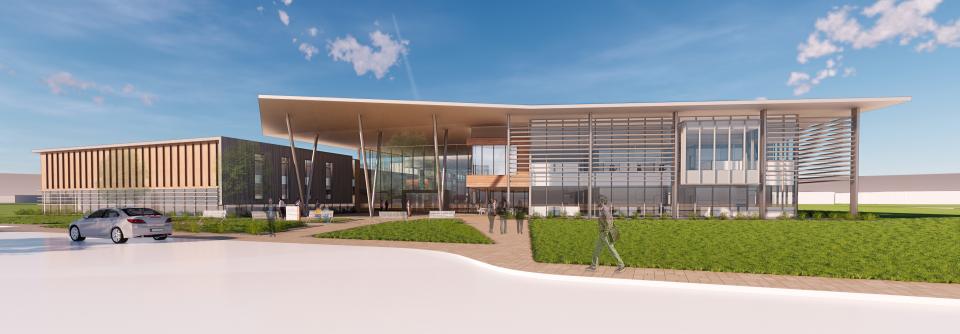
Research performed in the Energy Sciences Center will include both experimental and computational research programs striving to:
- Advance the frontiers of chemistry and materials science, expanding underlying knowledge of the fields and laying a foundation for the application to new technology development;
- Mimic biology to achieve advances in chemical transformations and hierarchical materials; and
- Develop advanced computational and data methods to accelerate scientific discovery in chemistry and materials science.
With outcomes that impact our world by:
- Transforming abundant wastes into high-value fuels and materials;
- Developing new catalysts to reduce vehicle emissions;
- Discovering cheaper, safer, and higher-performing energy storage materials;
- Developing more efficient ways to produce agricultural fertilizers; and
- Advancing materials and methodology for chemical separations.


